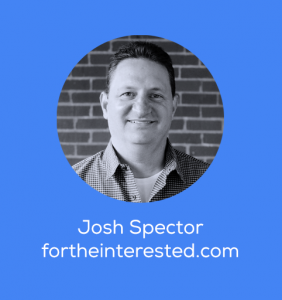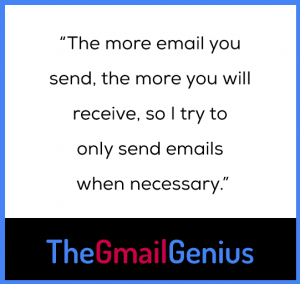How I Email: Josh Spector, Creator, For The Interested
Email is a non-negotiable part of everyday life. For some, it’s an unruly time suck, but enlightened email users have systems to ensure they’re not a slave to the inbox. We’re asking smart thinkers to give us a peek inside their inboxes, share tips, ideas, gripes, and everything in between.
Josh Spector, a digital marketing consultant and “idea guy,” believes there are two types of people in the world – the Interested and the Uninterested. His weekly newsletter caters to 25,000+ people who identify as the former. Josh shares his most valuable email ideas, including a seven-step plan for email overload.
 What does your daily email routine look like?
What does your daily email routine look like?
It depends a bit on the day.
If I have a lot of “actual work” I need to get done, I’ll limit how often I check email to maybe once in the morning and once in the afternoon.
On a typical day, it’s more fluid and I’ll dip in and out throughout the day.
But I definitely have a few email rules for myself…
– I never check email before breakfast, so the first time I check it is usually on my phone about 30-45 minutes after I wake up in the morning.
– I never check email (or social media) after 10 pm at night, which is a couple hours before I typically go to sleep.
– I never check email in the car or while eating a meal with other people.
– I have all email notifications turned off so I don’t get any dings or alerts every time a new email comes in. This helps me avoid getting distracted or sucked into email during a time when I need to be working on something else.
– I think trying to achieve Inbox Zero is a huge waste of time and I rarely delete emails. There are a lot of unread emails in my inbox, but they’re only for things I don’t care about or spam.
– I have a couple folders set up, but for the most part all my emails live in my main inbox. I use the search functionality if I need to find something in the archives.
– The more email you send, the more you will receive so I try to only send emails when necessary.
I also try to anticipate what information will ultimately need to be included and include it in the original email. For example, if I send an email to invite somebody to lunch, I’ll include a suggested time and place in that email. That cuts down on the back and forth and reduces the amount of incoming email I get.

Which newsletters are you always delighted to see in your inbox?
Here are some of my favorites. I also constantly subscribe to new ones I discover in my Newsletter Creators Facebook group.
You’ve offered tips for writing effective follow-up emails after meeting someone. If you had to summarize, what does a good follow-up note include?
Every email should have a clear goal. There should be a reason you send it and a thing you want to happen as a result of the person reading it.
Make it obvious what you want the recipient to do and include a simple call to action – don’t assume they will know what you want them to do.
Make it easy to read. Short sentences, lots of white space, and bullet points if possible.
Write an email, not a novel. Less is more.
Write in a friendly, personal tone. It shouldn’t sound like an academic paper, corporate memo, or a sales letter (even if it is one!).
By definition a follow-up email is going to somebody you’ve met or spoken with before, so don’t write as if they’re a stranger.
As the curator of For The Interested, have you come across any stand-out email-related ideas?
Yes, I’ve come across a TON of great email-related ideas and share new ones regularly in my newsletter. Some of my favorites include: the best auto-reply email I’ve ever seen, six email prompts you can use to start saying no, and a seven-step plan to handle email overload.